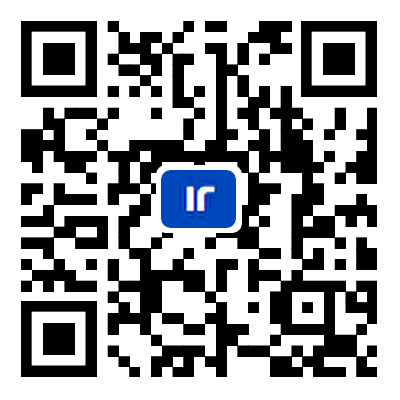REFERENCES
1. Global status report on road safety 2013: supporting a decade of action: summary. WHO; 2013. Available from: https://www.drugsandalcohol.ie/19499/. [Last accessed on 20 Nov 2023].
2. Wang J, Gong Y. Recognition of multiple drivers’ emotional state. In: IEEE 19th International Conference on Pattern Recognition; 2008 Dec 08-11; Tampa, USA. IEEE; 2008. p. 1-4.
3. Yaacob H, Hossain F, Shari S, Khare SK, Ooi CP, Acharya UR. Application of artificial intelligence techniques for brain-computer interface in mental fatigue detection: a systematic review (2011-2022). IEEE Access 2023;11:74736-58.
4. Sharma S, Khare SK, Bajaj V, Ansari IA. Improving the separability of drowsiness and alert EEG signals using analytic form of wavelet transform. Appl Acoust 2021;181:108164.
5. Khare SK, Bajaj V, Sinha GR. Automatic drowsiness detection based on variational non-linear chirp mode decomposition using electroencephalogram signals. In: Modelling and Analysis of Active Biopotential Signals in Healthcare, Volume 1. IOP Publishing; 2020. Available from: https://iopscience.iop.org/book/edit/978-0-7503-3279-8/chapter/bk978-0-7503-3279-8ch5. [Last accessed on 20 Nov 2023].
6. Colic A, Marques O, Furht B. Driver drowsiness detection - Systems and solutions. In: Springer Briefs in Computer Science. Springer; 2014.
7. Rezaei M, Klette R. Look at the driver, look at the road: No Distraction! No Accident! In: IEEE Conference on Computer Vision and Pattern Recognition; 2014; Jun 23-28. IEEE; 2014. pp. 129-36.
8. Nakamura T, Maejima A, Morishima S. Detection of driver’s drowsy facial expression. In: IEEE 2nd Asian Conference on Pattern Recognition; 2013 Nov 05-08. IEEE; 2013. pp. 749-53.
9. Ullah MR, Aslam M, Ullah MI, Maria MEA. Driver’s drowsiness detection through computer vision: a review. In: Mexican International Conference on Artificial Intelligence. Springer, Cham; 2017. pp. 272-81.
10. Akrout B, Mahdi W. Spatio-temporal features for the automatic control of driver drowsiness state and lack of concentration. Mach Vision Appl 2015;26:1-13.
11. Yu J, Park S, Lee S, Jeon M. Representation learning, scene understanding, and feature fusion for drowsiness detection. In: Asian Conference on Computer Vision. Springer, Cham; 2016. pp. 165-77.
12. Huynh XP, Park SM, Kim YG. Detection of driver drowsiness using 3D deep neural network and semi-supervised gradient boosting machine. In: Asian Conference on Computer Vision. Springer, Cham; 2016. pp. 134-45.
13. Shih TH, Hsu CT. MSTN: Multistage spatial-temporal network for driver drowsiness detection. In: Asian Conference on Computer Vision. Springer, Cham; 2016. pp. 146-53.
14. Shirakata T, Tanida K, Nishiyama J, Hirata Y. Detect the imperceptible drowsiness. SAE Int J Passeng Cars Electron Electr Syst 2010;3:98-108.
15. Gao Z, Le D, Hu H, Yu Z, Wu X. Driver drowsiness detection based on time series analysis of steering wheel angular velocity. In: IEEE 9th International Conference on Measuring Technology and Mechatronics Automation; 2017 Jan 14-15; Changsha, China. IEEE; 2017. pp. 99-101.
16. Rumagit AM, Akbar IA, Igasaki T. Gazing time analysis for drowsiness assessment using eye gaze tracker. Telecommun Comput Electron Contr 2017;15:919-25.
17. Amirudin NAB, Saad N, Ali SSA, Adil SH. Detection and analysis of driver drowsiness. In: IEEE 3rd International Conference on Emerging Trends in Engineering, Sciences and Technology; 2018 Dec 21-22; Karachi, Pakistan. IEEE; 2018. p. 1-9.
18. Chmielińska J, Jakubowski J. Detection of driver fatigue symptoms using transfer learning. B Pol Acad Sci Tech 2018;66:869-74.
19. Krizhevsky A, Sutskever I, Hinton GE. ImageNet classification with deep convolutional neural networks. Commun ACM 2017;60:84-90.
20. Sun Y, Wang X, Tang X. Deep learning face representation from predicting 10,000 classes. In: IEEE Conference on Computer Vision and Pattern Recognition; 2014 Jun 23-28; Columbus, USA. IEEE; 2014. pp. 1891-8.
22. Lecun Y, Bottou L, Bengio Y, Haffner P. Gradient-based learning applied to document recognition. Proceedings of the IEEE 1998;86:2278-324.
23. Levi G, Hassner T. Age and gender classification using convolutional neural networks. In: Proceedings of the IEEE conference on computer vision and pattern recognition workshops; 2015 Jun 07-12; Boston, USA. IEEE; 2015. pp. 34-42.
24. Trigueros DS, Meng L, Hartnett M. Face recognition: from traditional to deep learning methods. arXiv 2018; In press.
25. Park S, Pan F, Kang S, Yoo CD. Driver drowsiness detection system based on feature representation learning using various deep networks. In: Asian Conference on Computer Vision. Springer, Cham; 2016. pp. 154-64.
26. Li K, Gong Y, Ren Z. A fatigue driving detection algorithm based on facial multi-feature fusion. IEEE Access 2020;8:101244-59.
27. Arakawa T. Trends and future prospects of the drowsiness detection and estimation technology. Sensors 2021;21:7921.
28. Dua M, Shakshi, Singla R, Raj S, Jangra A. Deep CNN models-based ensemble approach to driver drowsiness detection. Neural Comput Appl 2021;33:3155-68.
29. Celecia A, Figueiredo K, Vellasco M, González R. A portable fuzzy driver drowsiness estimation system. Sensors 2020;20:4093.
30. Mao J, Xu W, Yang Y, Wang J, Huang Z, Yuille A. Deep captioning with multimodal recurrent neural networks (m-RNN). arXiv 2014; In press.
31. Graves A, Mohamed A, Hinton G. Speech recognition with deep recurrent neural networks. In: IEEE International Conference on Acoustics, Speech and Signal Processing; 2013 May 26-31; Vancouver, Canada. IEEE; 2013. pp. 6645-9.
32. Chernodub A, Nowicki D. Sampling-based gradient regularization for capturing long-term dependencies in recurrent neural networks. In: International Conference on Neural Information Processing. Springer, Cham; 2016. pp. 90-7.
33. Liang M, Hu X. Recurrent convolutional neural network for object recognition. In: IEEE Conference on Computer Vision and Pattern Recognition; 2015 Jun 07-12; Boston, USA. IEEE; 2015. pp. 3367-75.
34. Donahue J, Hendricks LA, Guadarrama S, et al. Long-term recurrent convolutional networks for visual recognition and description. In: IEEE Conference on Computer Vision and Pattern Recognition; 2015 Jun 07-12; Boston, USA. IEEE; 2015. pp. 2625-34.
35. Wang J, Yang Y, Mao J, Huang Z, Huang C, Xu W. CNN-RNN: A unified framework for multi-label image classification. In: IEEE conference on Computer Vision and Pattern Recognition; 2016 Jun 27-30; Las Vegas, USA. IEEE; 2016. pp. 2285-94.
36. Jeong JH, Yu BW, Lee DH, Lee SW. Classification of drowsiness levels based on a deep spatio-temporal convolutional bidirectional LSTM network using electroencephalography signals. Brain Sci 2019;9:348.
37. Tan H, Bansal M. LXMERT: learning cross-modality encoder representations from transformers. arXiv 2019; In press.
38. Li W, Gao C, Niu G, et al. UNIMO: towards unified-modal understanding and generation via cross-modal contrastive learning. arXiv 2020; In press.
39. Zeng Y, Zhang X, Li H. Multi-grained vision language pre-training: aligning texts with visual concepts. arXiv 2021; In press.
40. Huang Z, Zeng Z, Huang Y, et al. Seeing out of the box: end-to-end pre-training for vision-language representation learning. In: Proceedings of the IEEE/CVF Conference on Computer Vision and Pattern Recognition; 2021. pp. 12976-85. Available from: https://openaccess.thecvf.com/content/CVPR2021/papers/Huang_Seeing_Out_of_the_Box_End-to-End_Pre-Training_for_Vision-Language_Representation_CVPR_2021_paper.pdf. [Last accessed on 20 Nov 2023].
41. Kim W, Son B, Kim I. ViLT: vision-and-language transformer without convolution or region supervision. In: Proceedings of the 38th International Conference on Machine Learning. PMLR; 2021. pp. 5583-94. Available from: https://proceedings.mlr.press/v139/kim21k.html. [Last accessed on 20 Nov 2023].
42. Zhang Z, Lan C, Zeng W, Chen Z. Multi-granularity reference-aided attentive feature aggregation for video-based person re-identification. In: Proceedings of the IEEE/CVF conference on computer vision and pattern recognition; 2020. pp. 10407-16. Available from: https://openaccess.thecvf.com/content_CVPR_2020/papers/Zhang_Multi-Granularity_Reference-Aided_Attentive_Feature_Aggregation_for_Video-Based_Person_Re-Identification_CVPR_2020_paper.pdf. [Last accessed on 20 Nov 2023].
43. Li Q, Qiu Z, Yao T, Mei T, Rui Y, Luo J. Action recognition by learning deep multi-granular spatio-temporal video representation. In: Proceedings of the ACM on International Conference on Multimedia Retrieval; 2016. pp. 159-66.
44. Chen D, Cao X, Wen F, Sun J. Blessing of dimensionality: high-dimensional feature and its efficient compression for face verification. In: IEEE Conference on Computer Vision and Pattern Recognition; 2013 Jun 23-28; Portland, USA. IEEE; 2013. pp. 3025-32.
45. Wang D, Shen Z, Shao J, Zhang W, Xue X, Zhang Z. Multiple granularity descriptors for fine-grained categorization. In: IEEE International Conference on Computer Vision; 2015 Dec 07-13; Santiago, Chile. IEEE; 2015. pp. 2399-406.
46. Huang R, Wang Y, Li Z, Lei Z, Xu Y. RF-DCM: multi-granularity deep convolutional model based on feature recalibration and fusion for driver fatigue detection. IEEE Trans Intell Transp Syst 2020;23:630-40.
47. Weng CH, Lai YH, Lai SH. Driver drowsiness detection via a hierarchical temporal deep belief network. In: Asian Conference on Computer Vision. Springer; 2016. pp. 117-33.
48. Ren S, Cao X, Wei Y, Sun J. Face alignment at 3000 FPS via regressing local binary features. In: IEEE Conference on Computer Vision and Pattern Recognition; 2014 Jun 23-28; Columbus, USA. IEEE; 2014. pp. 1685-92.
49. Danelljan M, Häger G, Khan F, Felsberg M. Accurate scale estimation for robust visual tracking. In: Proceedings of the British Machine Vision Conference. Bmva Press; 2014. pp. 1-12. Available from: https://www.diva-portal.org/smash/get/diva2:785778/FULLTEXT01.pdf. [Last accessed on 20 Nov 2023].
50. Greff K, Srivastava RK, Koutník J, Steunebrink BR, Schmidhuber J. LSTM: a search space odyssey. IEEE Trans Neural Netw Learn Syst 2017;28:2222-32.
51. Khare SK, Bajaj V, Acharya UR. SchizoNET: a robust and accurate Margenau-Hill time-frequency distribution based deep neural network model for schizophrenia detection using EEG signals. Physiol Meas 2023;44:035005.
52. Yu J, Park S, Lee S, Jeon M. Driver drowsiness detection using condition-adaptive representation learning framework. IEEE T Intell Transp 2018;20:4206-18.
53. Wang C, Yan T, Jia H. Spatial-temporal feature representation learning for facial fatigue detection. Int J Pattern Recogn Artif Intell 2018;32:1856018.









